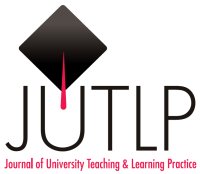| 總結: | There is ongoing interest in developing rigorous and accurate assessment methods in higher education, particularly in the use of assessment rubrics and in providing more useful feedback to students rather than a simple grade. However, there has been little used of reliable assessment rubrics that provide feedback to individual students on their teamwork participation and skills, and which assist academic staff in assessing teamwork among students. This paper reports on the second phase of a study that aimed to evaluate a rubric to assess skills and processes in teamwork, and whether a rubric facilitated a better learning experience than a simple marking scheme. The second phase focused on the implementation of a revised assessment rubric designed to assist students and staff in understanding what was expected in the assessment process, and in particular the creation of efficient tools and metrics to measure both teamwork and individual performance during collaborative team design projects. Findings from two surveys of students provided the dataset for this second phase of the study. The findings demonstrate that assessment rubrics provide an important adjunct in improving students' teamwork performance and their understanding of their learning activities. This study will also contribute to ongoing discussions on higher education assessment methods. [Author abstract]
|
|---|


